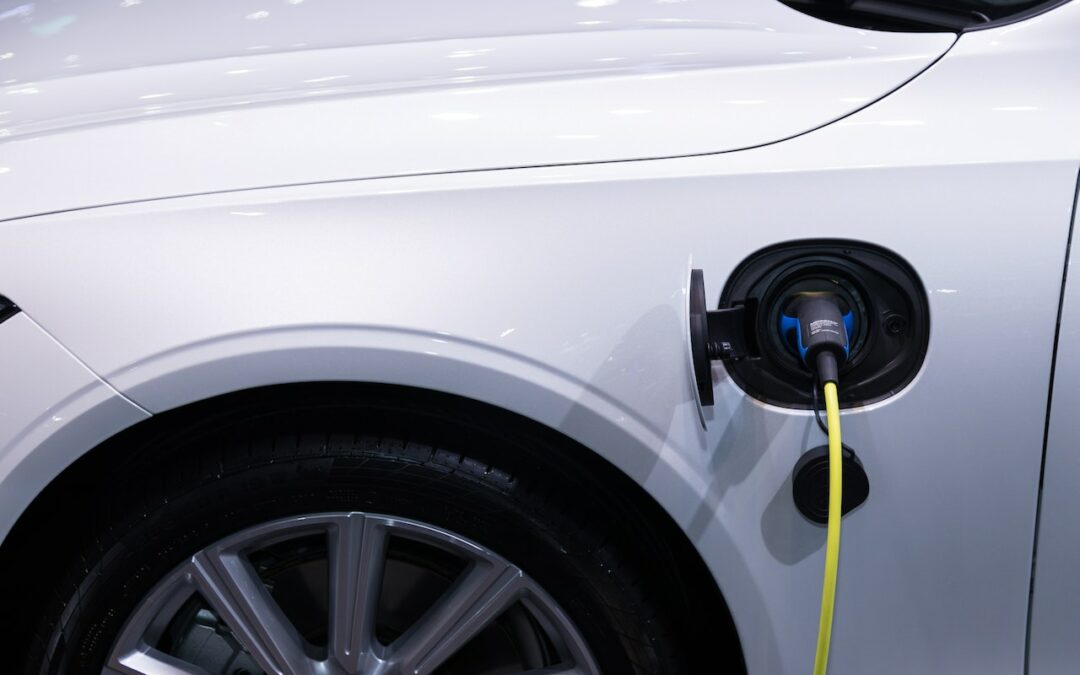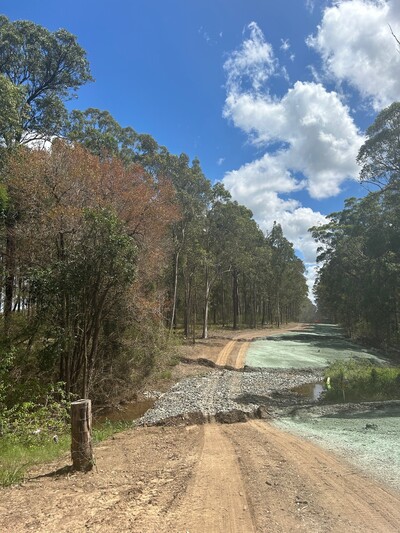
by Komoneed | Jun 30, 2024
The health care sector is uniquely positioned to be a leader in sustainability by implementing practices that mitigate the harms of the climate crisis while advancing public health.

by Komoneed | Jun 30, 2024
Peugeot’s seven-seat electric car offers big practicality and no small amount of style.

by Komoneed | Jun 28, 2024
The federal government has determined that lithium for batteries is a sovereignty issue to Australia on the expectation that lithium will be core to the future of energy. In an effort to improve domestic capabilities, the government is investing heavily in the construction of lithium hydroxide plants and the support for lithium mining and processing, and for battery manufacturing.
However, this lithium-centric approach may not be the panacea for Australia’s energy challenges, and the excessive focus currently could, counter-intuitively, cost us sovereign resilience in the longer term.
Lithium-ion batteries certainly have a key role to play in both energy storage and use. They are indispensable for applications such as electric cars and home appliances, and will be central in helping us move away from carbon-emitting transport.
However, they also have inefficiencies and risks that mean they’re not appropriate for every application. The highly reactive nature of lithium poses safety concerns, with risks of fire and explosion if not managed properly. As the number of devices with batteries increases, storage, disposal and recycling all become major challenges. Currently, the recycling of lithium-ion batteries is done in China, and transporting all those batteries is a safety concern. Additionally, the recycling process itself is highly toxic.
Moreover, the environmental footprint of lithium batteries cannot be overlooked. The extraction and processing of lithium bear significant ecological impacts, including water pollution and habitat disruption.
Another issue is that there is more in lithium batteries than just the lithium itself. The technology’s reliance on other scarce materials, such as cobalt, nickel and graphite, further complicates the sustainability equation. Whenever Australia relies on supply chains from overseas markets, particularly those in geopolitically sensitive regions, there is a level of risk to sovereignty that needs to be managed — a risk best mitigated by finding alternatives.
Finally, there’s the simple reality that lithium batteries are inefficient for many storage activities. The batteries do work, but the economics make it difficult to scale to underpin and guarantee grid resilience. That, coupled with the limited duration of energy storage that they provide means that they are insufficient to allow us to move the grid away from carbon-emitting fossil fuels in full. For that, you need economically viable storage with a duration of 12 hours or longer, and it is currently difficult, expensive and inefficient to press lithium into service that way, at a grid level.
For Australia to achieve true energy sovereignty — a state where it is not overly dependent on external sources for energy or infrastructure, the government needs to not focus on lithium, but invest broadly. The government’s ‘Future Made in Australia’ policy has the right intent. As do the initiatives that were announced through the budget. These programs aim to develop homegrown technologies and manufacturing capabilities, reducing reliance on international supply chains.
But a lot more needs to be done, and Australia needs to scale rapidly in several areas. There are several proven energy storage technologies beyond lithium, such as flow batteries and compressed air energy storage, which offer the potential for large-scale, long-duration energy storage. The best solution is to acknowledge that we’re currently playing catch-up and invest in lithium… but also recognise that we don’t want to fall behind with other emerging technologies, and so invest in those too so that we can approach the transition with a mix of technologies. This is also the only way that we can scale to fill the total capacity that we require.
Investing in the modernisation of the electricity grid to better integrate renewable sources and in energy efficiency measures for industries and homes is also crucial. Resilience in Australian energy should mean community-level generation and distribution, rather than the highly centralised and inefficient grid that we currently rely on.
Such a diversified investment approach would not only address the immediate needs of the energy sector but also foster long-term economic growth, job creation and environmental stewardship.
Dr Thomas Nann, a former professor of chemistry and nano technologist, is the inventor of a water-based, non-flammable battery technology.
Top image credit: iStock.com/PhonlamaiPhoto

by Komoneed | Jun 28, 2024
Hunter Water has significantly bolstered its water supply infrastructure with the installation of a 3 km water trunk main in Black Hill. The additional trunk main will reinforce water supply capabilities by increasing supply from Black Hill 1 Reservoir.
Hunter Water Group Manager Asset Solutions Justin Watts said the upgrades will help to ensure the infrastructure continues to operate safely and reliably, as well as catering for population growth.
“The Black Hill Trunkmain Duplication Project marks a significant milestone in our commitment to ensuring a resilient and sustainable water supply for the communities we serve,” Watts said.
“These improvements will accommodate future growth in the Cameron Park area and fortify water reliability in Maryland, Fletcher and Minmi by providing a new pipeline linked with our bulk water supply network.
“By duplicating the existing infrastructure, we are not only preparing for future growth but also strengthening our ability to deliver reliable water services.”
Location of trunk main duplication upgrades in Black Hill.
The duplicate pipeline was constructed from John Renshaw Drive to Black Hill, entirely within the confines of the existing pipeline corridor.
“In order to complete this work, our Hunter Water crews completed trenching and under-boring along the new pipeline route — all while working closely with the local community to minimise impacts from the construction,” Watts said.
“These upgrades are a crucial component of Hunter Water’s overarching program aimed at the replacement and enhancement of water- and wastewater-related assets throughout our area of operations,” he added.
Hunter Water has another water main project that is about to commence, involving replacement of 1.4 km of pipeline between O’Connells Road and Reflection Drive in Louth Park. This pipeline replacement will assist with improving water efficiency, as well as preventing leaks.
The utility said these upgrades are part of an extensive program of works to improve assets and replace aging infrastructure across the region.
More information about the upgrades is available at: hunterwater.com.au/community/major-projects-in-your-area.
Top image caption: Trunk main duplication work in progress at Black Hill. Images courtesy of Hunter Water.

by Komoneed | Jun 28, 2024
As the impacts of climate change intensify globally and emission reduction deadlines loom, Australia must prioritise its power supply.
The 2019–2020 Australian bushfires, which triggered widespread blackouts nationwide, underscore the urgent need for power resilience. These events highlighted the critical necessity for reliable energy sources and robust energy storage solutions for businesses and communities alike. Moreover, they emphasised the importance of integrating renewable energy sources into the national grid to ensure a resilient and sustainable power supply during disruptions.
To do so, we must embrace digital technologies in the energy sector. These advancements not only support growth and sustainability but also enhance the resilience of our energy systems. By making renewable energy more practical and efficient, digital innovations pave the way for a stable and sustainable energy future for Australia. The transition to a digitally enabled, renewable energy infrastructure is not just an option — it is essential for securing our energy needs in the face of ongoing and future challenges.
Renewable progress in Australia
The government has set ambitious targets to expand renewable energy capacity, planning to add substantial wind and solar projects. This demonstrates Australia’s significant progress in adopting renewable energy systems (RES). Australian energy provider Origin Energy has recently demonstrated its strong commitment to renewable energy infrastructure by investing AU$400 million to build a 460 MW battery energy storage system (BESS) at its Victoria peaker plant.
Adopting RES helps drive the reduction of emissions and ensures energy availability. However, renewable energy generation is variable, depending on the fluctuating intensity of the sun and wind. To address this variability, we need grid-scale energy storage. Research indicates that implementing such solutions can help develop resilient grids capable of accommodating high levels of RES.
Long-duration storage
Long-duration energy storage (LDES) remains a significant technical challenge, as storage requirements can vary from hours to months. Pumped-storage hydroelectricity is widely used but holds untapped potential in many regions. Batteries, particularly lithium-ion, are the most scalable form of grid-scale storage due to their modular deployment and availability. Other technologies, like compressed air and gravity storage, play smaller roles in current power systems. Additionally, hydrogen storage holds promise for the seasonal storage of renewable energy.
Emerging technologies, such as flow batteries, also offer potential. Flow batteries use a liquid electrolyte to store electrical charge, scalable and adaptable to the variability of wind and solar generation. According to recent studies by 2040, LDES could deploy between 1.5 and 2.5 terawatts (TW) of power capacity globally, representing a significant increase from current levels.
Microgrid support
LDES can support micro-grid designs for large energy users, such as manufacturing and heavy industry. These facilities can deploy large battery systems, like lithium-ion batteries in intelligent uninterruptible power systems (UPS), to enhance storage capacity and facilitate greater RES adoption. Microgrids offer short-term storage capacity, helping to smooth peak grid usage and address variability concerns. This is especially beneficial for rural deployments and areas where proximity to RES generation is an issue. Microgrids ensure resilience, allowing power to flow even when generation sites are offline due to atmospheric conditions or disruptions.
As Australia moves towards implementing smart national grids, microgrids play a significant role. Large energy users can be rewarded for their storage and resupply capabilities, supporting peak grid usage. These measures can be quickly implemented through economies of scale, reference designs and vendors’ pursuit of efficiency. Organisations can confidently build out capacity while supporting decarbonisation efforts, moving Australia closer to a net zero energy future.
Digital innovation in power
The digitalisation of energy, or Electricity 4.0, is crucial for smart grids, microgrid integration, RES adoption and achieving net zero goals. Digital innovation enhances visibility in energy generation and distribution, eliminating waste and driving efficiency. Technologies like metering and monitoring enable better energy usage, while smart devices, apps, analytics and software allow for more efficient deployment of smart energy. These solutions enable everyone to contribute to a renewable-powered, sustainable energy future.
Renewable energy sources will form a significant part of future energy generation, crucial for achieving a decarbonised, net zero goal. Grid-scale energy storage and its resilience are critical for integrating renewable energy sources into digitised smart grids. Large energy consumers can support this transition by leveraging digitalised energy systems, increasing transparency and underpinning the development of sustainable digital economies accessible to all.
Australia’s renewable energy future depends on the effective integration of energy storage solutions. By embracing digital innovation and scalable storage technologies, we can build resilient and sustainable energy systems that meet our future needs.
Natalya Makarochkina.
Top image credit: iStock.com/JaCZhou





